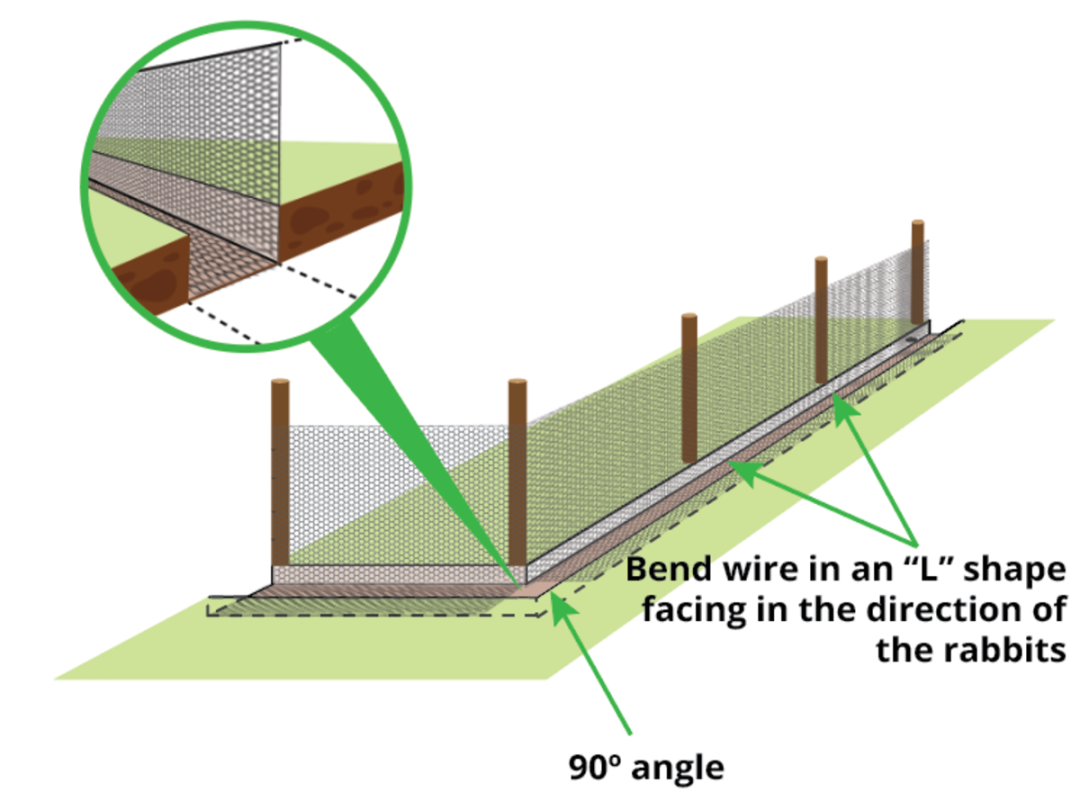How to Build a Rabbit Fence
Rabbits can be a nuisance in gardens, causing damage to plants, vegetables, and flowers. Building a rabbit fence is an effective way to protect your garden from these furry intruders. In this article, we will guide you through the process of building a rabbit fence to ensure the safety of your plants and the beauty of your garden.

Materials Needed
To build a rabbit fence, you will need the following materials:
- Wire mesh: Choose a wire mesh with small openings, such as chicken wire or hardware cloth. This will prevent rabbits from squeezing through.
- Wooden or metal posts: These will serve as the supports for your fence.
- Zip ties or wire: Use these to secure the wire mesh to the posts.
- Gate (optional): If you want to have easy access to your garden, consider installing a gate.
Step-by-Step Guide
- Measure the area: Start by measuring the perimeter of your garden or the area you want to enclose with the rabbit fence. This will help you determine the amount of wire mesh and number of posts you will need.
- Mark the locations of the posts: Using stakes or paint, mark the locations where you will install the posts. Ideally, the posts should be placed 8 to 10 feet apart.
- Dig holes for the posts: Dig holes using a post hole digger or shovel, ensuring they are deep enough to support the height of your fence and keep it stable. Typically, a depth of 2 to 3 feet is recommended.
- Install the posts: Place the posts in the holes and fill them with soil, making sure they are straight and secure. Use a level to check their alignment. Allow the soil to settle and tamp it down firmly to ensure stability.
- Attach the wire mesh: Unroll the wire mesh along the outside of the posts, extending it to the desired height. Secure the mesh to each post using zip ties or wire. Make sure the mesh is taut and attach it firmly to prevent rabbits from pushing through or digging underneath.
- Secure the bottom of the fence: Bury the bottom edge of the wire mesh at least 6 inches into the ground to prevent rabbits from burrowing underneath. This will create a barrier that deters them from entering your garden.
- Install a gate (optional): If you want to have a gate for easy access, install it by attaching it to two posts using hinges. Make sure the gate is aligned properly and securely attached to prevent rabbits from squeezing through any gaps.
Tips for Maintaining the Fence
- Regularly inspect the fence for any damage or holes and repair them promptly.
- Trim any vegetation that may grow near the fence, as rabbits may use it as leverage to jump over.
- Make sure the fence is tall enough to prevent rabbits from jumping over it. A height of at least 2 feet is recommended.
- Consider adding a layer of chicken wire or hardware cloth to the bottom of the fence and extending it outward for added protection against digging.
FAQs (Frequently Asked Questions)
1. How high should a rabbit fence be?
A rabbit fence should be at least 2 feet high to prevent rabbits from jumping over it.
2. Can rabbits dig under fences?
Yes, rabbits are capable of digging under fences. To prevent this, bury the bottom edge of the fence at least 6 inches into the ground.
3. Do I need a gate for my rabbit fence?
Having a gate is optional but can provide easy access to your garden. If you choose to install a gate, make sure it is secure and aligned properly to prevent rabbits from squeezing through any gaps.
4. How often should I inspect my rabbit fence?
It is recommended to inspect your rabbit fence regularly, at least once a month, to check for any damage or holes that may need repair.
Building a rabbit fence is a practical solution to protect your garden from rabbit damage. With the right materials and following the step-by-step guide, you can enjoy a beautiful garden without worrying about furry intruders. Remember to maintain the fence properly and address any issues promptly to ensure its effectiveness in keeping rabbits at bay.
Related Articles…
Copyright Notice:
All images on this website are obtained from the internet and remain copyrighted to their original owners. If you hold copyright to any image and want it taken down, please reach us.